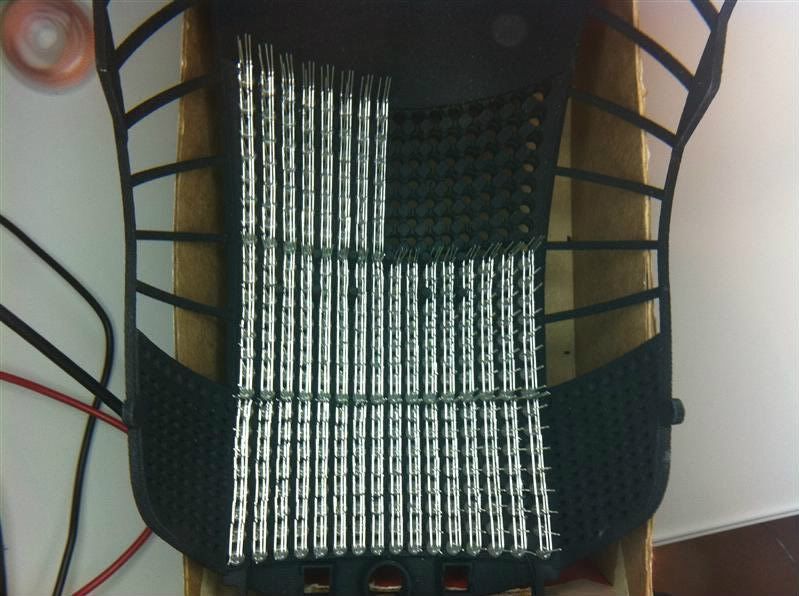Re: Daft Punk Thomas Bangalter helmet build
D-D-D-Double-post!
Sorry for the self bump, but got some progress to show.
A while back I posted a mockup rig for the LED subvisor:

I went back and forth on the dimensions for a while, trying to figure out the best spacing between the LEDs and the visor, and also between the LEDs themselves. Even small changes will result in a pretty drastic overall shift in the layout of the grid, so this is a project I've been subconsciously putting off for a little while... Finally took the plunge last night.
I settled on a sheet of .063" Aluminum sheet for the upper and lower frames, to be held in place with thick-walled aluminum tube stock, threaded for countersunk screws. This is one of those times I really with I had access to a laser cutter.
Top plate:

Bottom plate:

After a LOT of time on my scrollsaw & drill press, I had these. The multiple-circle areas in the middle is where I'll be mounting ventilation fans, situated directly above the "nose vents" on the underside of the visor.

The result at the end of the evening:

I still need to countersink a few of the holes slightly deeper, and a few of the rods need to be tapped further to allow the screws to sit fully flush. There's a bunch more holes that need to be drilled and cut (for wire routing, mounting, and to hold the PET subvisor in place) but this is the basic jist of things. Really happy with how its looking so far, can't wait to get some circuitry on it!

D-D-D-Double-post!
Sorry for the self bump, but got some progress to show.
A while back I posted a mockup rig for the LED subvisor:

I went back and forth on the dimensions for a while, trying to figure out the best spacing between the LEDs and the visor, and also between the LEDs themselves. Even small changes will result in a pretty drastic overall shift in the layout of the grid, so this is a project I've been subconsciously putting off for a little while... Finally took the plunge last night.
I settled on a sheet of .063" Aluminum sheet for the upper and lower frames, to be held in place with thick-walled aluminum tube stock, threaded for countersunk screws. This is one of those times I really with I had access to a laser cutter.
Top plate:

Bottom plate:

After a LOT of time on my scrollsaw & drill press, I had these. The multiple-circle areas in the middle is where I'll be mounting ventilation fans, situated directly above the "nose vents" on the underside of the visor.

The result at the end of the evening:

I still need to countersink a few of the holes slightly deeper, and a few of the rods need to be tapped further to allow the screws to sit fully flush. There's a bunch more holes that need to be drilled and cut (for wire routing, mounting, and to hold the PET subvisor in place) but this is the basic jist of things. Really happy with how its looking so far, can't wait to get some circuitry on it!















